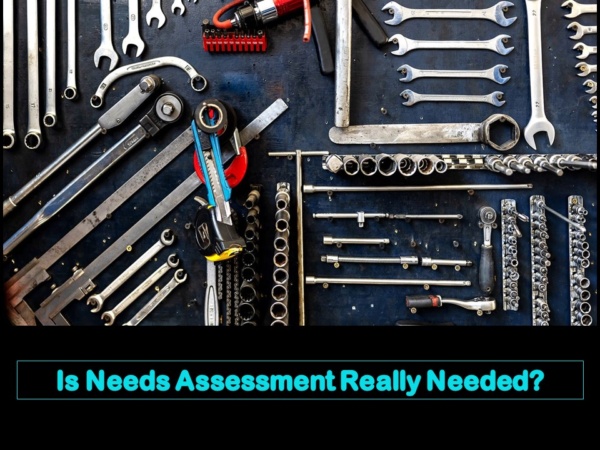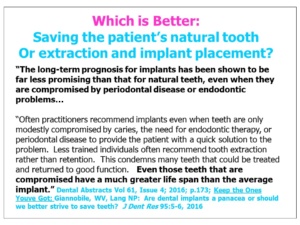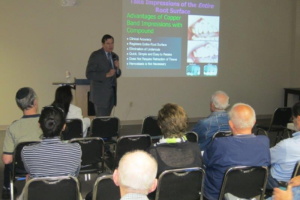
Is Needs Assessment Really Needed?
How do you determine what is needed? Needs assessment surveys do not really communicate what is NEEDED—they communicate what is POPULAR. Is popularity a valid criteria to determine what courses should be provided? I think not.
But both ADA CERP and AGD PACE mandate needs assessment surveys for their continuing education providers:
ADA CERP rev 2022: “Providers must use identifiable mechanisms to determine objectively the current professional needs and interests of the intended audience, and the content of the program must be based upon these needs.”
AGD PACE rev 2020: “Program providers and their planning committee must utilize identifiable mechanisms to determine objectively the current professional needs and interests of the intended audience.”
Are new dentists–who have no basis determining what they really need for best practices–qualified to determine what courses should be offered? I think not. It has been my observation that their knowledge is extremely limited.
For example, they do not know about the existence of ONWARD’s philosophy and techniques for crown and bridgework. These techniques have a 70-year track record of success that is measured with case longevity. They do not know anything about the double-tilt precision attachment case. They do not know how to save teeth flush with the gingiva without posts, buildups, fancy extrusion procedures or extensive crown lengthening. They do not know that many of the problems they are having with crown and bridgework were actually solved in the 1930’s.
They do, however, know a lot about implants and they know that implants can be very lucrative. They are happy pushing patients into implant treatments. How do we know this? There is an absolute epidemic of tooth extraction and implant placement. Implants are being over-used and used inappropriately. Since new dentists are happy performing these lucrative treatments, why would it ever occur to them that they need what ONWARD has to offer? It should go without saying that if they were surveyed, they would not “need” what ONWARD has to offer. But when you think about how patients are suffering with overly invasive treatments, they DESPERATELY need what ONWARD has to offer.

ONWARD courses are there for those who really wish to learn; for those who wish to help their patients with new options for dental treatment. Should they not be offered if needs assessment surveys point out that they are not “popular?”
I have been absolutely stunned at this point in my career that new dentists who I have worked with in their offices are absolutely NOT interested in what I have to teach. Not a SINGLE thing. They think I am a dinosaur with antiquated techniques because they are so tech and computer savvy. I was told to my face: “No one can practice like you.” How insulting. How did they get to be so smart? I had to work very hard over the course of my career to become such an expert on full coverage restorative dentistry. I have 45 years of experience, but in their eyes that counts for nothing.
The truth is that on their best day they could never do what I can do. I have not only given thousands of hours of continuing education, but I have also taken thousands of continuing education courses. I am up on all the latest technology. I know how to use computers and I have taken them apart.
I desperately want to give to others everything that has taken me a lifetime to learn. What a bitter pill to swallow that so few new practitioners actually want what I have to offer. When I started my career, dentists would have given their eye teeth to have someone like me in their offices. How times have changed!
The idea of “Needs Assessment” really gets my dander up. From what I can see, most practitioners are not qualified to determine what they actually need. CERP and PACE want courses to be offered solely on the basis of popularity. I disagree. I think the information MUST be made available for any practitioner who wants it—and there are good practitioners everywhere who DO want it.
While we are on the subject of “needs assessment,” here’s another question. Should dental companies only offer products that are popular? What about products that aren’t viewed as popular but are extremely valuable for superior treatments and advancement of the profession? When did the bottom line become the benchmark for every marketing decision?
I am very concerned about these disturbing trends. Forces within the dental profession are coming together to act as gatekeepers to prevent new ideas and non-mainstream techniques from being offered. Dental educators reinforce gatekeeping by making their dental schools closed to outside educators. Dental publications use their peer review systems to discard any ideas that do not conform to mainstream dogma.
I believe “Needs Assessment” contributes to this “bandwagon effect.” The bandwagon effect, says Dr. Itmar Shatz, PhD, is a cognitive bias that causes people to think or act a certain way if they believe that others are doing the same.” [https://effectiviology.com/bandwagon/]. Dr. Shatz explains that the bandwagon effect can influence the adoption of new technologies through popularity instead of through supporting evidence for their efficacy. Popularity leads to group attitudes (herd behavior) and “norms” that are contagious. The resulting “groupthink” causes practitioners to act in a similar ways and strive for conformity.”
An unspoken peer pressure keeps all practitioners in lockstep—so much so–that when evidence is encountered that counters common belief, it is summarily rejected. In fact, outright rejection often leads to entrenchment, strengthening support for the popular stance. This cognitive bias, explains Igmar Shatz, is known as the backfire effect.
[https://effectiviology.com/backfire-effect-facts-dont-change-minds/]
It seems clear that dental education is not creating practitioners who have the ability to think individually and objectively, to examine the evidence for their beliefs and to think outside the box. These are qualities that are essential for health care practitioners to excel with patient care. Doctors treat individuals and—contrary to popular belief–there is no “one-size-fits-all.” Literature studies measure averages and cannot be the only benchmark for what treatment is best for an individual. Astute clinical judgement takes years to develop and requires a lot of different tools in one’s armamentaria. That armamentaria must include crown and bridge skills as well as implant skills. More often than not full coverage restorative dentistry is the best treatment for a patient, not the implant. But most new dentists do not know this, so they don’t think they need crown and bridgework skills.
I think it is high time that the profession stops fawning over new dentists and promoting them as great practitioners when they are clearly not. No one starts their careers as great practitioners—it takes years to become great. Let’s drop this needs assessment exercise and give new dentists the skills they REALLY need—great skills in full coverage restorative dentistry as well as great implant skills–so that they can truly become great practitioners.
Become the best practitioner in full coverage restorative dentistry that you can be! Don’t settle! Join the ONWARD program and learn how to do crown and bridgework with excellence and confidence, how to save “hopeless” teeth, and how to provide new options for patient treatment that you never thought of. Visit the website and join here: https://theonwardprogram.com/membership/
Dr. Feinberg is also available to give presentations. His CV and speaker packet is posted on the website. (https://theonwardprogram.com/about-dr-feinberg/) Dr. Feinberg can be reached at info@theONWARDprogram.com.



